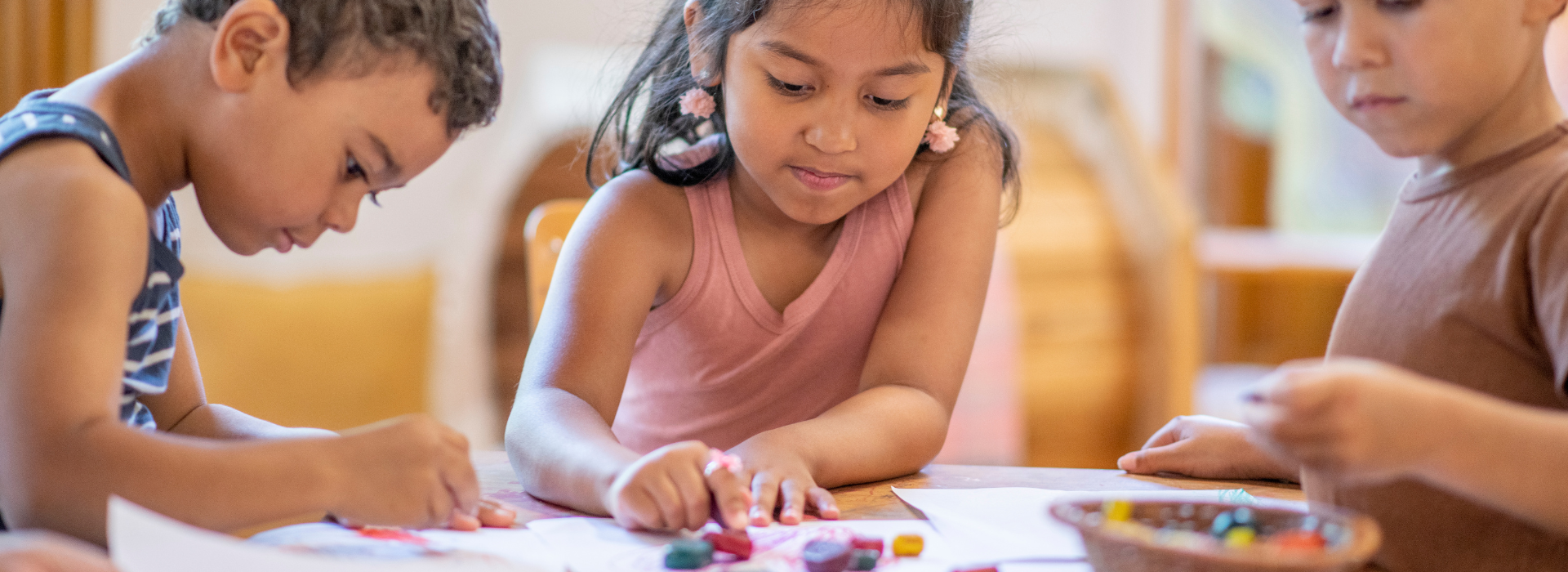
Occupational therapy intervention enables children to engage in needed and valued life activities or “occupations.” Occupational therapists working in educational settings help children to prepare for and perform important learning and school-related activities and to fulfill their role as a student. They use a wide array of service models, materials, strategies, and accommodations to support a student’s participation and progress in school.
An occupational therapy practitioner has a strong background in human development and activity participation. The therapist has specialized knowledge and skills in social and emotional learning and regulation, task analysis, assistive technology, and environmental modifications. Occupational therapy practitioners support a student’s transition between activities and encourage school success through development of study skills, self-care independence, social skills, problem-solving abilities, and vocational interests. Occupational therapy practitioners address the sensory needs of students as well as environmental aspects that impact learning.
OTs may offer simple strategies through collaborative consultation with teachers, help design an environment that supports improved processing for learning and performance, use existing school materials and equipment to facilitate greater access to learning, or introduce low- or high-tech devices that allow the student to participate in the learning activity. The individual needs of the student drive this selection and application. As a related service, occupational therapy supports the child’s “occupation” of learning and his or her ability to participate in educational activities in the environment.
Occupational therapy practitioners in schools focus on a child’s ability to participate in the following occupations:
- personal care (eating, toileting, dressing, hygiene, managing personal belongings, personal organization, task-related mobility)
- education (achieves in a learning environment, including academic and nonacademic)
- graphic communication (handwriting, keyboarding, drawing, coloring, art)
- work/community integration ( field trips, develops interests and skills for work activities)
- play/leisure ( interacts with appropriate toys and objects; engages in games and leisure experiences; participates in art, music, sports, and after-school activities)
- student role/interaction skills (develops appropriate school relationships with peers and teachers; engages in appropriate behavior that does not interfere with learning and social relationships; safety awareness; respecting the space, time, materials of others; requesting help; making needs known; follows classroom/specials/school/bus/cafeteria protocols and routines).
OT looks at the influence the environment has on the individual’s ability to succeed in their daily routines. Daily routine activities include:
- classroom
- cafeteria
- playground
- gymnasium
- art room
- music room
- extracurricular
- work place
OTs assess function in underlying performance components including:
- neuromuscular status
- sensation
- sensorimotor
- in-hand manipulation skills
- mental functions/process skills.
They work on multiple skills, including sensory, gross-/fine- motor, social/emotional , cognitive, language and oral motor skills, to improve performance in school activities.
- Organized sensory processing helps children attain the following skills: Focus and attending to task, writing/coloring with appropriate pencil or crayon pressure, standing in line with classmates, participating in table activities, enjoying all types of food
- Gross motor development helps students accomplish the following functional school skills: sitting upright at a desk, participating in physical education requirements, accessing playground equipment, managing stairs, balancing on toilet seat, maneuvering through classroom
- Fine-motor skills are important for performing the following functional school skills: holding a pencil correctly, controlling scissors when cutting, manipulating buttons and zippers on clothing, tying shoes, using a paintbrush, turning a doorknob, using utensils
- Bilateral coordination skills refer to the ability to use both sides of the body in a coordinated fashion. They are important for students to be successful with the following functional skills: washing hands, climbing stairs by alternating feet, stabilizing items while coloring or cutting, catching a ball, clapping hands, skipping or jumping jacks
- Eye-hand coordination skills help students be successful with the following functional skills: cutting accurately, copying shapes, writing the letters of the alphabet, assembling puzzles, coloring within the lines
- Effective social skills are necessary for students to acquire the following functional skills: cooperating, attending to task, following the leader, taking turns, sharing and following directions.
- Cognitive skills are taught as the children engage in purposeful activities. Academic skills are emphasized to help the students achieve success in the following areas: letter recognition, shape identification, color identification, visual perceptual skills (matching, discrimination, memory), position concepts of up/down, under/over, front/back, on/off, problem solving
- Language skills are necessary to help students develop the following school skills: following 1-to-2 step directions, receive communication for understanding directions, expressive communication, non-verbal communication such as gestures of sign language and vocabulary skills.
- Oral motor skills are necessary for students to acquire the following functional skills: chewing food, sucking through a straw, safe swallowing, clear speech and blowing instruments.
Types of OT services and supports in the following performance areas may include:
- academic (advise and collaborate with teachers on strategies to teach students visual-motor skills including handwriting, coloring, and cutting; identify needed curriculum accommodations and modifications for standardized testing; suggest adaptations to curriculum materials; help identify and use strategies so that students with sensory processing needs can participate in the educational setting; use therapeutic activities and strategies to strengthen and/or provide modification for sensori-motor skill weaknesses; provide transition support)
- functional (help identify and teach use of assistive technology to support participation; facilitate use and management of school-related materials, daily routines; written school work; task/activity completion; transition support; adherence to rules; self-regulation; collaborate with family and school staff in development of transition programs; collaborate with school personnel in the design and implementation of positive mental health programs and behavioral support systems)
- developmental (foster development of pre-academic skills, including prewriting and pre-scissor skills; toileting skills; eating and drinking skills; dressing and grooming tasks; communication skills; management of sensory needs; social skills)
